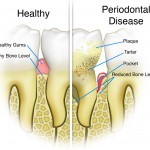
Hyaluronic acid is naturally present in the body the highest concentrations being found in the eyes and joints. It is also present in many tissues including the periodontium. It is considered to be a good material for wound healing as has shown positive benefits in repair of connective tissues bones and skin. Studies have also suggested beneficial impact on periodontal outcomes.
The aim of this review was to evaluate the potential clinical effects of hyaluronic acid (HA)when used in conjunction with non-surgical and surgical periodontal therapy.
Methods
Searches were conducted in the Medline/PubMed, Embase, Cochrane, Web of Science, Scopus and Grey literature databases (www.greynet.org; https://scholar.google.ch/; www. worldcat.org). Randomised controlled trials (RCTs) on the use of HA as an adjunctive to surgical and non-surgical periodontal treatment published in English were considered. For surgical studies there was a minimum requirement of 6-months follow-up and 3 months for non-surgical treatment.
Two reviewers independently selected studies extracted data and assessed risk of boas using the Cochrane tool. Meta-analyses were conducted for pocket depth (PD), clinical attachment level (CAL) and bleeding on probing (BOP). Weighted mean differences (WMDs) and 95% confidence intervals (CIs) between the treatment and controls were estimated using the random-effects model.
Results
- 13 RCTs were included.
- 3 trials were considered to be at low risk of bias the remainder at high risk.
- Non-surgical treatment
- 11 trials (6 split-mouth, 5 parallel) assessed non-surgical treatment.
- Only 2 studies were considered to be at low risk of bias.
- Meta-analysis favoured the use of HA for all 3 outcomes however considerable heterogeneity was identified in the studies.
| No of studies | WMD (95%CI) | |
| CAL gain | 9 | 0.73mm (0.28mm to 1.17mm) |
| PD reduction | 8 | −0.36mm (−0.54mm to −0.19 mm) |
| BOP reduction | 5 | −15% (−22% to −8%) |
- Surgical treatment
- Only 2 trials assessed surgical treatment.
- One trial was considered to be at low risk of bias.
| No of studies | WMD (95%CI) | |
| CAL gain | 2 | 0.85mm (0.08mm to 1.62mm) |
| PD reduction | 2 | −0.89mm (−1.42mm to −0.36 mm) |
Conclusions
The authors concluded: –
Within their limits, the present data indicate that the topical application of HA may lead to additional clinical benefits when used as an adjunctive to non-surgical and surgical periodontal therapy. However, due to the high risk of bias and heterogeneity, there is a need for further well-designed RCTs to evaluate this material in various clinical scenarios.
Comments
The authors have searched a wide range of databases to identify relevant studies although the decision to exclude non-English publication may have excluded some relevant papers. The included studies are small with the largest including 56 patients in total and the vast majority of the included studies were considered to be at high risk of bias. Given the potential for measurement error with the main periodontal indicators the fact that less than 50% of the included studies had blinded outcomes assessment is an important consideration when interpreting the findings.
Consequently, while the review is suggestive of a positive impact of topical HA on non-surgical outcomes of periodontal treatment the findings should be viewed very cautiously. Well conducted and reported RCTs with good sample sizes are needed to properly evaluate the clinical value of HA.
Links
Primary Paper
Eliezer M, Imber JC, Sculean A, Pandis N, Teich S. Hyaluronic acid as adjunctive to non-surgical and surgical periodontal therapy: a systematic review and meta-analysis. Clin Oral Investig. 2019 Sep;23(9):3423-3435. doi:10.1007/s00784-019-03012-w. Epub 2019 Jul 23. Review. PubMed PMID: 31338632.
